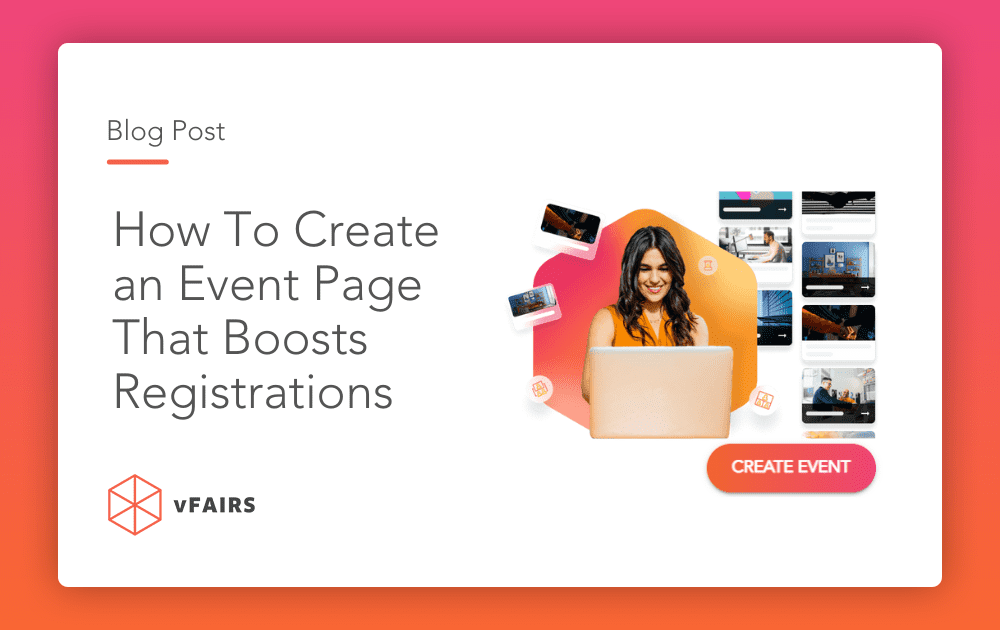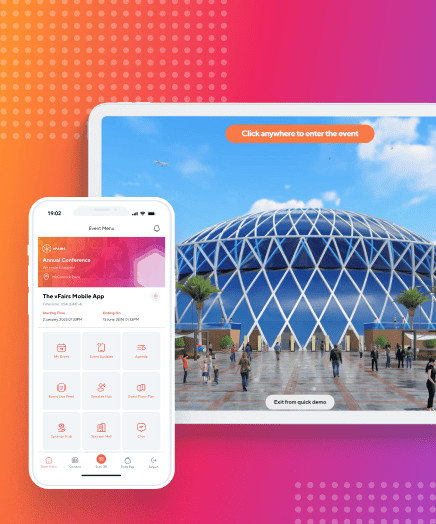Creating an event page on an event marketplace is an essential step in promoting your event and driving attendance.
An event page serves as a central hub for all your event information. It helps you communicate the event’s value proposition to a potential attendee. By creating a well-designed event page that showcases your event’s features, benefits, and agenda, you can capture the attention of your target audience and encourage them to register for your event.
Additionally, an event landing page allows you to track registration and engagement metrics. This is how you can measure the success of your event marketing efforts and make data-driven decisions to optimize your event’s performance.
In this blog post, we will walk you through the do’s and don’ts in the process of creating and listing your event on a marketplace that connects event organizers with their target audience and provides a comprehensive tool to promote and manage their events.
Why Event Pages Matter
Event descriptive pages are crucial for promoting your event and driving attendance. Without a dedicated page, it’s hard to provide potential attendees with all the information they need to decide whether or not to attend. You may also miss out on key opportunities to engage with your target audience, build excitement, and generate interest.
Event listings are important for SEO (search engine optimization) purposes. A dedicated page for your event with relevant keywords makes it more likely to appear in search engine results when people are looking for events like yours.
Key Elements That Can Drive Attendee Engagement and Boost Event Registration
To ensure you create a successful event page, event planners should focus on several key elements to engage attendees and increase event registration.
1. Engaging Event Landing Page
A well-designed event landing page that highlights the key features and benefits of your event to attract the attention of your target audience and convinces them to register.
2. Eye-Catching Banner
A visually appealing banner that showcases the event name, date, and theme that can immediately grab the attention of potential attendees.
3. Event Description
A brief, informative event description that highlights the key features, benefits, and target audience of the event can help attendees quickly understand the value proposition.
4. Agenda
An agenda that lists the key sessions, speakers, and timings of the event can help attendees plan their schedule and ensure they don’t miss any important sessions.
5. Registration Button
A prominent, easy-to-find registration button that allows attendees to register for the event can encourage them to take action and sign up.
6. Interactive Features
Interactive features such as chat rooms, video meetings, and Q&A sessions can provide attendees with opportunities to engage with speakers, exhibitors, and other attendees, learn about their products and services, and build meaningful connections.
7. Exhibitors and Sponsors Listing
A clear and well-organized exhibitor and sponsor listing that showcases their logos, company names, and brief descriptions can help attendees learn more about the companies involved and build interest in their offerings.
8. Sponsorship Opportunities
An overview of available sponsorship opportunities can help potential sponsors understand the benefits of partnering with your event and encourage them to get involved.
9. Mobile-Responsive Design
A mobile-responsive design of an event landing page with clear and concise language ensures the attendees to access it from any device.
10. Boost Event Registrations
Promote your event landing page through social media, email marketing, and other channels to drive traffic and encourage registrations.
5 Mistakes To Avoid While Setting Up the Event Page
When creating your event page, it’s important to avoid certain mistakes that can negatively impact the success of your event.
1. Neglecting to Optimize for SEO
Search engine optimization (SEO) is critical to increasing the visibility and reach of your event. If you fail to optimize your event page for SEO, potential attendees may struggle to find your event through search engines like Google or Bing. This can have a significant impact on attendance and ultimately, the success of your event. A few things to keep in mind include using relevant keywords, creating high-quality content, and adding images with alt text.
2. Cluttered or Confusing Design
A cluttered or confusing design can be a major turn-off for potential attendees. When designing your event page, it’s important to keep it simple, clean, and easy to navigate. This helps potential attendees quickly understand the value proposition of your event and find the information they need. A cluttered or confusing design can make it difficult for potential attendees to take your event seriously and may even cause them to leave your website altogether.
3. Incomplete or Inaccurate Information
Providing incomplete or inaccurate information about your event can be a major source of frustration for potential attendees. Your event page must provide all the necessary details about your event, including the date, time, location, registration details, and pricing. Failure to provide this information can lead to confusion, and may even discourage potential attendees from registering.
4. Ignoring the Importance of Visuals
Visuals are a crucial component of any event page, as they help to create a strong first impression and engage potential attendees. Neglecting to include high-quality visuals such as images, videos, and infographics can make your event page appear unprofessional and unappealing to potential attendees.
5. Failing to Include Clear Calls-to-Action
Clear calls-to-action (CTAs) are an essential element of any event page, as they guide potential attendees toward the next step and make it easier for them to take action. Neglecting to include clear CTAs such as “Register Now” or “Learn More” can make it difficult for potential attendees to know what to do next, which can ultimately result in fewer sign-ups and lower attendance.
The Benefits of an Event Marketplace
Using an event marketplace like vFairs Discover to create your event page offers several advantages. First, it provides access to a large audience of potential attendees looking for events like yours. This can help you reach your target audience more effectively and generate more registrations.
An event marketplace provides a comprehensive tool to promote and manage your event. It allows you to create a professional-looking event page quickly and easily, as well as provides tools for marketing, registration, and engagement.
How To Promote Your Event Page
Once you have created a compelling event page on vFairs Discover, the next step is to promote it to potential attendees. Here are some tips to help you effectively promote your event page:
1. Leverage Social Media
Use social media platforms like LinkedIn, Twitter, Facebook, and Instagram to promote your event page and build buzz around your event.
2. Email Marketing
Send targeted and personalized emails to your potential attendees to promote your event and drive registrations.
3. Influencer Outreach
Reach out to influencers in your industry or niche and ask them to share your event with their followers.
4. Paid Advertising
Use paid advertising platforms like Google Ads, Facebook Ads, or LinkedIn Ads to target potential attendees and drive traffic to your event page.
5. Event Listings
List your event on relevant event directories or websites to increase its visibility and attract more attendees.
How to Create An Event Page with vFairs Discover
Now if you’re ready to create your event page, let’s follow these simple steps to publish your very first event page:
- Sign up for an account by clicking on the “Create Event” button in the top right corner of the website. Fill out the sign-up form and wait for the confirmation email to arrive in your inbox.
2. Once you’ve clicked on the confirmation link in the email, you’ll land on the Onboarding Portal. Here, you can start creating your event by selecting the event mode and event type and filling in some basic event details.
3. Once you are done with submitting the basic details, you will be redirected to your personal event dashboard. Here you can click on the edit button of the event you recently created and start adding more information. Add all the relevant details about your event, such as the date, time, description, speaker bios, agenda, exhibitor and sponsor details, and any other pertinent information.
4. Once you’re satisfied with your event page, publish it to make it live on vFairs Discover.
5. Once your page is live, you can view and share it on social media and other channels to promote your event and attract attendees.
6. You can also use the “Add New Event” button to create more events.
Creating a well-designed event page on an event marketplace like vFairs Discover can be a game-changer for event organizers looking to increase registrations and engagement.
So, get started today.



